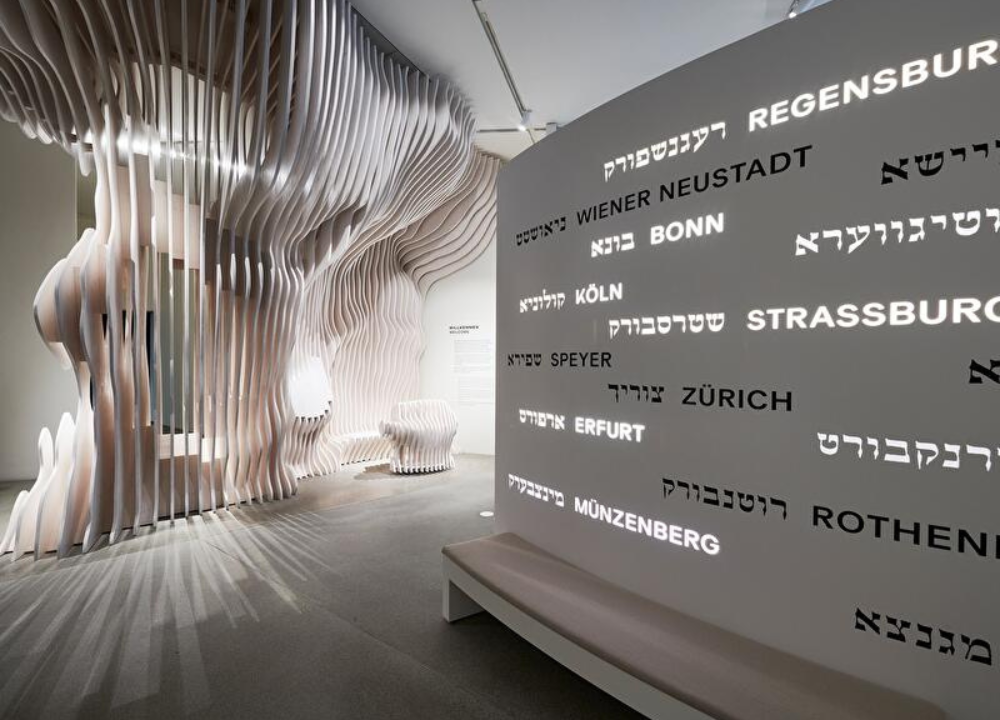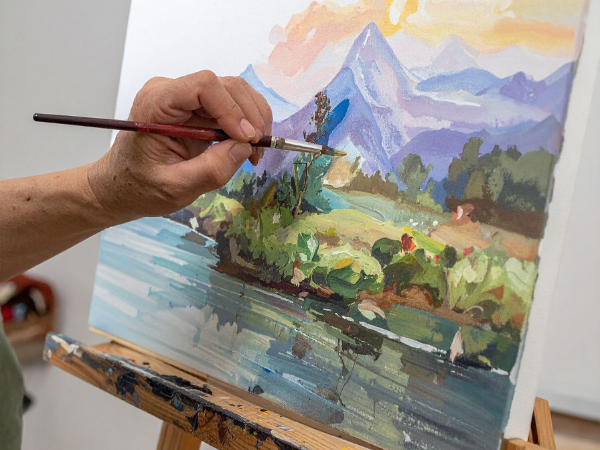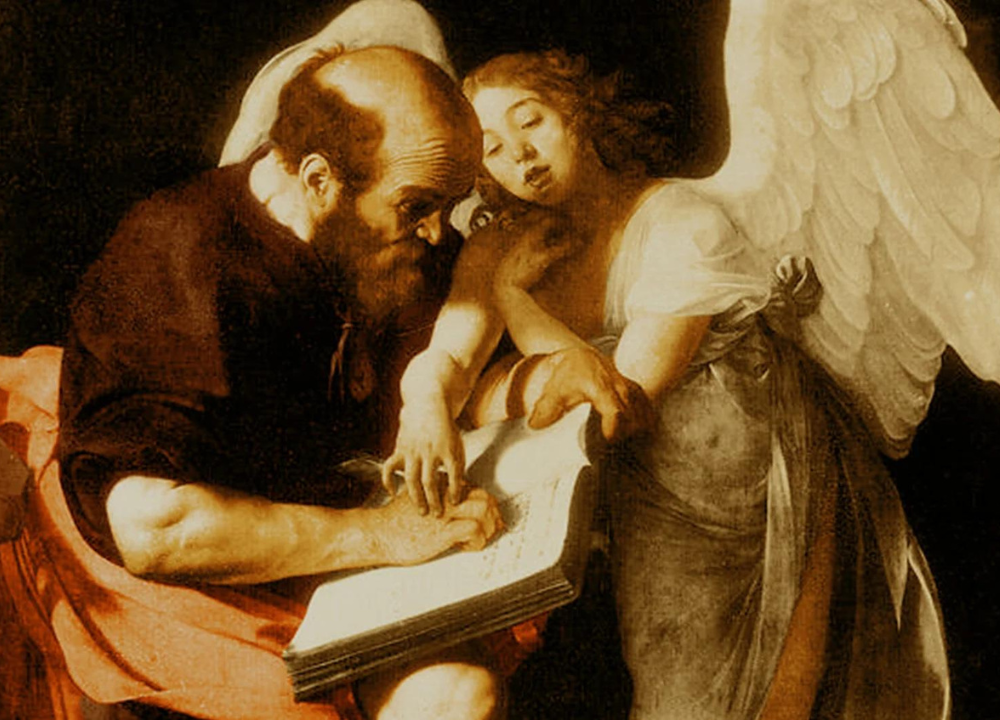Jewish Museum exhibits showcase the rich history and vibrant culture of Jewish communities. They feature artifacts, art, and interactive displays.
Jewish Museums around the world offer a unique lens through which visitors can explore the multifaceted aspects of Jewish life, history, and tradition. These museums serve as guardians of heritage, providing educational experiences that foster understanding and appreciation among diverse audiences.
From ancient manuscripts and ceremonial objects to contemporary art and multimedia installations, the exhibits are designed to engage visitors of all ages and backgrounds. They tell the story of Jewish perseverance, innovation, and contributions to society. By visiting these exhibits, individuals gain insights into the challenges and achievements of Jewish communities through the ages. Engaging with these carefully curated collections, visitors embark on a journey that bridges past and present, enriching their knowledge and perspectives on Jewish culture and history.
History Of Jewish Museums
The story of Jewish museums is a fascinating journey through time and culture. These museums serve as guardians of Jewish heritage, showcasing a tapestry of life, faith, and history. They invite visitors to explore the rich traditions and narratives of Jewish communities across the globe. From artifacts to multimedia displays, Jewish museums offer a window into the past and a mirror reflecting contemporary Jewish life.
Origins
The first Jewish museums sprung up in the 19th century, born from a desire to preserve Jewish culture and educate both Jews and non-Jews about the community’s contributions to society. These early museums focused on religious objects and remnants of Jewish life, aiming to tell the story of a people with a history spanning thousands of years. The Jewish Museum in Prague, established in 1906, stands out as one of the earliest and most significant of these institutions. It began with a collection of Judaica from abandoned synagogues. Here’s a quick glance at the foundational elements of these museums:
- Preservation of religious and cultural artifacts
- Educational missions to promote understanding
- Focus on communities’ historical and artistic achievements
These museums initially served as repositories for sacred Jewish texts, ceremonial objects, and art. They played a crucial role in maintaining Jewish identity, especially in times of change and upheaval.
Evolution Of Exhibits
As time progressed, Jewish museums evolved. They began embracing a broader narrative, one that included not only religion and ritual but also the everyday life of Jewish communities. The shift reflected a more comprehensive view of Jewish history and culture. It highlighted the diversity within Jewish experiences and the impact of Jews on the wider world. Contemporary Jewish museums now feature a variety of exhibits, including:
| Exhibit Type | Examples |
|---|---|
| Historical Artifacts | Ancient manuscripts, coins, traditional garments |
| Art Exhibitions | Works by Jewish artists, themed art shows |
| Interactive Media | Touch screens, virtual reality experiences |
| Personal Stories | Testimonies from Holocaust survivors, immigrant tales |
Modern Jewish museums aim to engage visitors with dynamic displays and thought-provoking installations. They blend the old with the new, ensuring that each story, whether etched in ancient stone or told through digital media, resonates with audiences of all ages.
Significance Of Jewish Museum Exhibits
Exploring Jewish Museum Exhibits is like opening a treasure chest of history and culture. These exhibits are not just displays; they are vibrant storytellers of a rich heritage that spans thousands of years. They offer unique glimpses into the lives, traditions, and resilience of Jewish communities. The significance of these exhibits lies in their ability to connect the past with the present, ensuring that the stories, struggles, and triumphs of the Jewish people continue to resonate with generations to come.
Preserving Heritage
Jewish Museum Exhibits play a crucial role in safeguarding the essence of Jewish culture. Through a variety of mediums, these exhibits capture the essence of Jewish life, from ancient artifacts to contemporary art. Each piece tells a story, whether it’s a centuries-old Torah scroll or a modern sculpture reflecting on the Holocaust. These are not just items to look at; they are the keepers of history, each with a lesson to share.
- Artifacts and relics provide a tangible connection to the past.
- Exhibits showcase the diversity within Jewish communities.
- Preservation efforts keep traditions and stories alive for future generations.
For instance, consider the following table that highlights key artifacts commonly found:
| Artifact | Historical Significance | Cultural Relevance |
|---|---|---|
| Menorahs | Symbol of ancient Temple worship | Represents Jewish faith and identity |
| Ketubah | Traditional marriage contract | Illustrates social and legal customs |
| Sabbath candlesticks | Used in weekly Sabbath observance | Signifies the importance of family and tradition |
These items are more than just objects; they are a bridge connecting visitors to the Jewish way of life.
Educational Value
The educational value of Jewish Museum Exhibits is immense. They serve as dynamic classrooms, providing insightful learning experiences for all ages. Interactive displays, guided tours, and workshops encourage visitors to engage with the content and think critically about the narratives being presented. This hands-on approach to learning fosters a deeper understanding and appreciation of Jewish history and customs.
- Exhibits often include stories of individuals and communities.
- Visitors learn about significant historical events and their impact.
- Museums offer programs that support school curricula.
For example, the following points illustrate the educational journey a visitor might experience:
- Introduction to Jewish holidays and how they are observed.
- Exploration of Jewish contributions to arts, science, and society.
- Discussion on themes of resilience and perseverance throughout history.
Such experiences leave lasting impressions, inspiring visitors to continue exploring and learning beyond the museum walls.
Types Of Exhibits
Jewish Museum exhibits offer a window into a rich tapestry of culture, history, and art. Each exhibit tells a story, inviting visitors of all ages to explore and learn. From ancient scrolls to modern multimedia, these exhibits come in many types. Let’s dive into the fascinating variety you can expect to see.
Artifacts And Relics
Jewish history brims with artifacts and relics that span thousands of years. Museums showcase these items to bring stories from the past to life. Here are different types you might find:
- Historical documents: These include old scrolls, letters, and books.
- Religious items: Torah scrolls, menorahs, and shofars are on display.
- Everyday objects: Tools, clothing, and coins show daily life in different eras.
These items often sit inside glass cases to protect them. They may have labels that tell their stories. Some museums use QR codes next to the artifacts. Visitors can scan them with their phones to learn more.
| Item | Time Period | Description |
|---|---|---|
| Torah Scroll | Medieval | An ancient, handwritten copy of the Torah. |
| Ancient Coin | Roman Era | A coin from the time of the Second Temple. |
| Traditional Dress | 19th Century | Outfits worn during important festivals. |
Interactive Installations
Interactive installations make learning fun and memorable. They often include:
- Touch screens: These let visitors dive deeper into stories and images.
- Recreations: Some exhibits recreate scenes from history. Kids can walk through them.
- Games: Puzzles and quizzes test knowledge in an enjoyable way.
These installations invite visitors to become part of the exhibit. For instance, a digital timeline might allow guests to swipe through history. Or, a replica of a historical market could let kids barter and trade like in the olden days.
Temporary Exhibitions
Temporary exhibitions keep the museum experience fresh and exciting. They often focus on:
- Modern artists: These shows feature works by Jewish artists from today.
- Special themes: Some exhibitions explore topics like immigration or cuisine.
- Historical events: Others remember important moments in Jewish history.
These exhibits change every few months, so there’s always something new to see. They may include a mix of paintings, sculptures, and videos. Museums often host special events around these exhibitions, like talks or tours.

Challenges In Curating Exhibits
Jewish Museum Exhibits showcase a rich tapestry of history, culture, and religion. These exhibits bring to life the stories and traditions of Jewish communities. Curators face unique challenges when presenting these narratives. They must balance historical accuracy, cultural sensitivity, and educational value. This task is complex and requires a deep understanding of the subject matter. Let’s delve into the specific challenges curators face with Jewish Museum Exhibits.
Sensitive Topics
One of the biggest challenges in curating Jewish Museum Exhibits is handling sensitive topics. These include the Holocaust, anti-Semitism, and other traumatic events in Jewish history. Museums must present these subjects with care and respect. Curators work to create a space where visitors can learn and reflect. Here are some ways they approach these topics:
- Consulting community leaders to ensure accurate representation
- Creating educational materials that support the exhibits
- Offering support services for visitors affected by the content
Curators often use a mix of personal stories and historical artifacts to convey the gravity of these events. They strive to honor the memories of those who suffered. At the same time, they must avoid causing distress to the audience.
Authenticity And Documentation
Another key challenge in curating Jewish Museum Exhibits is ensuring authenticity and documentation. Historical accuracy is vital to preserve the integrity of the narratives presented. Curators often need to verify the authenticity of artifacts and documents. They must also provide clear context for the items on display. Here are some steps taken to ensure authenticity:
- Working with historians and scholars for accurate information
- Verifying the provenance of artifacts to confirm their history
- Using documentary evidence to support the authenticity of items
By taking these measures, curators help build trust with the audience. Visitors can engage with the exhibits knowing they are seeing true pieces of history. This trust is fundamental to the educational mission of Jewish Museums.
Engaging Audiences
Jewish Museum Exhibits are more than just displays of artifacts. They are vibrant hubs where history, culture, and art come alive. To truly engage audiences, these exhibits must captivate the senses, stir emotions, and spark curiosity. With thoughtful design and interactive elements, Jewish Museums around the world are transforming the visitor experience. They create memorable encounters that resonate with people of all ages and backgrounds.
Innovative Display Techniques
Jewish Museums use innovative techniques to tell their stories. These methods turn ordinary visits into immersive journeys. Visitors don’t just see; they participate. Here’s how:
- Interactive Timelines: Guests can touch screens to delve into historical events, drawing them deeper into the narrative.
- Themed Rooms: Each space tells a different chapter of Jewish history, using decor and artifacts to set the scene.
- Guided Audio Tours: Personal stories come to life through the voices of narrators, making connections feel personal.
Exhibits also use sensory elements like lighting and soundscapes to enhance the atmosphere. A table below shows some examples:
| Element | Description | Impact |
|---|---|---|
| Lighting | Spotlights highlight key artifacts | Focuses attention and creates mood |
| Soundscapes | Background music and effects | Builds an emotional setting |
| Textures | Wall hangings and fabrics | Invites touch and adds depth |
Incorporating Technology
Technology brings a new layer of interaction to Jewish Museum Exhibits. It makes learning dynamic and accessible. Here are some ways technology is used:
- Virtual Reality (VR): Visitors put on headsets to explore ancient synagogues or historic Jewish neighborhoods.
- Augmented Reality (AR): With tablets or smartphones, guests can see digital overlays on top of real-world exhibits.
- Interactive Kiosks: Touch screens provide more information, games, and quizzes to test knowledge and engage visitors.
These technologies make exhibits come to life. A visitor might use a tablet to restore a faded painting or watch a hologram tell its story. The table below shows some technology applications:
| Technology | Application | Benefit |
|---|---|---|
| VR | Time-travel to key moments | Immersive history lessons |
| AR | See artifacts in original context | Enriches understanding |
| Kiosks | Interactive learning stations | Customized visitor experiences |
Collaborations And Partnerships
Jewish Museum Exhibits shine through unique Collaborations and Partnerships. Museums are not just about the past. They are vibrant community hubs. They form strong bonds with local groups and global partners. This helps in creating memorable exhibits and educational programs. Such partnerships enrich the cultural tapestry of society.
Community Involvement
Jewish Museums play a pivotal role in their communities. They engage locals in various ways. Here are some methods they use:
- Volunteer Programs: Locals join as guides or help in events.
- Educational Outreach: Museums partner with schools to teach history and culture.
- Cultural Events: They host festivals that celebrate Jewish heritage with the community.
These efforts lead to a vibrant museum experience. They help the exhibits come alive. Look at this table that shows common partnerships:
| Partnership Type | Benefits |
|---|---|
| Artists | Unique exhibitions |
| Historians | Accurate storytelling |
| Local Businesses | Sponsorships and support |
Such collaborations ensure that museums stay relevant. They also guarantee that the community feels a sense of ownership.
International Connections
Jewish Museums foster connections beyond borders. They collaborate with museums and cultural institutions worldwide. These partnerships allow for:
- Traveling Exhibits: Artifacts and stories reach a broader audience.
- Research Projects: Joint efforts lead to new discoveries and insights.
- Exchange Programs: Staff and expertise travel, enriching both sides.
These international ties promote understanding and peace. They bridge cultural divides. The table below highlights typical international collaborations:
| Collaboration | Impact |
|---|---|
| Exhibit Swaps | Diverse cultural exposure |
| Joint Events | Global celebration of Jewish culture |
| Education Programs | Shared knowledge and resources |
International partnerships showcase the global nature of Jewish heritage. They enable museums to tell a more complete story.
Frequently Asked Questions
What Are Jewish Museum Top Exhibits?
Jewish Museums typically showcase a variety of exhibits ranging from ancient artifacts to contemporary art. The top exhibits often include historical documents, religious relics, Holocaust testimonials, and works by prominent Jewish artists. These exhibits aim to educate and inspire through the rich history and culture of the Jewish people.
When Is The Jewish Museum Open?
The opening hours for Jewish Museums can vary, but many are open from Sunday to Friday, aligning with the Jewish Sabbath. Most museums have specific hours listed on their websites. It’s best to check the official museum website or call ahead to confirm the current opening times before planning a visit.
Are There Guided Tours At Jewish Museums?
Many Jewish Museums offer guided tours, providing visitors with in-depth information and context about the exhibits. These tours can be led by knowledgeable museum staff or volunteers and may be available in several languages. It is advisable to inquire in advance or check online for the tour schedule and availability.
Can I Host Events At The Jewish Museum?
Numerous Jewish Museums provide facilities for hosting private events like weddings, conferences, or educational workshops. The availability of spaces and the terms of use vary by museum. Interested parties should contact the museum’s events department for more details on booking and any associated costs.
Conclusion
Exploring Jewish Museum exhibits offers a deep dive into rich cultural heritage and history. Each display tells a unique story, connecting visitors with centuries-old traditions and contemporary narratives. Don’t miss the chance to experience this enlightening journey. It promises insights and inspiration for all who walk through its doors.



